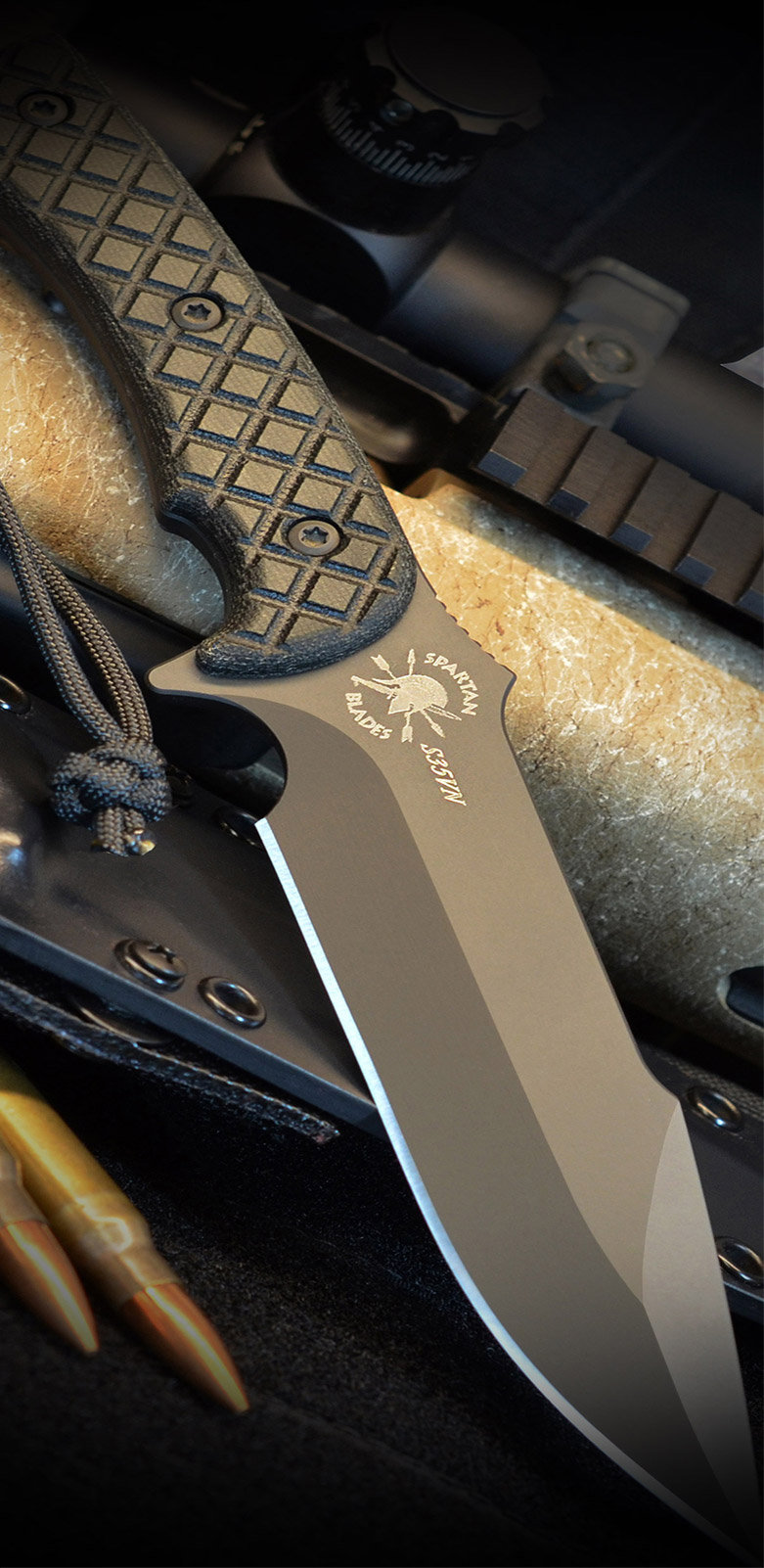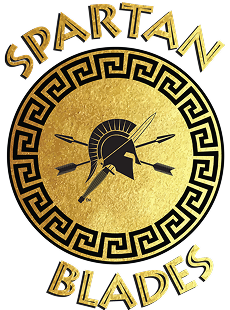
Fiber Laser Knife Engraving: How Does It Work?
Here at Spartan Blades, we’re proud to offer our customers the best in custom, handcrafted fixed blade and folding knives. Whether you’re looking for an everyday carry, a combat knife, a survival blade, or anything else, there’s something in our range of knives for you.
One of the things we get the most excited about around here is the design and crafting of our special edition knives. We release a new line of special edition blades each year, and we put a lot of thought and effort into creating customer designs that make these knives truly unique.
Over the years, customers have asked us how we manage to achieve such detail with the engraving of these knives. If you browse our catalog, in fact, you’ll notice that virtually all of our knives have at least some form of highly detailed engraving on them. How do we do it?
The answer is fiber laser engraving. Not sure what that is? In this blog post, we’ll talk about what fiber laser engraving is and how it works. Let’s get started.
What Is Fiber Laser Engraving and How Does It Work?
Have you ever seen someone start a fire using a magnifying glass? Take a moment and think back to when you were a kid. Maybe you were in the boy scouts, or maybe you went camping with family -- or maybe you and your friends tried this experiment for yourselves. If you put a leaf or bundle of dried glass under a magnifying glass, focus a beam of sunlight through the glass, and then direct that sunlight onto the leaf or grass, the material you’re attempting to ignite will begin to heat up. Eventually, it will catch fire.
What’s happening here? Piles of leaves don’t catch fire just from sitting out in the sunlight, do they? The principle here is actually pretty simple. Essentially, the magnifying glass is collecting sunlight across the width of the glass and then focusing all of that energy into a tiny, narrow, highly concentrated beam. That energy is transferred into the leaves or grass (or whatever you’re using as kindling in this scenario), and eventually the temperature increases such that the compound combusts.
In a sense, this is the same principle that fiber laser engraving is using when creating a design on a piece of steel. The difference is that rather than collecting sunlight using a very simple lens, laser engraving involves passing laser light through a highly complex lens known as an f theta lens.
Sunlight is comprised of a variety of wavelengths of light. Think about the full color spectrum that we see: there are different wavelengths for different colors, and sunlight contains quite a few of them. Meanwhile, laser light is highly focused. All of the light coming from a laser is of the same wavelength or color, with the specific wavelength depending on the laser.
All of this is to say that while a laser operates on a similar principle to a magnifying glass focusing sunlight, lasers are much more precise and significantly more powerful. With an f theta lens, it’s also possible to “steer” the laser light through a flat plane, rather than focusing it on a single point. This is ideal for engraving applications.
The Art of Fiber Laser Engraving
Of course, all of this precision requires a knowledgeable user. Achieving intricacy and detail is something that requires the proper laser settings, which will vary from one material and project to the next.
When setting a fiber laser for engraving work, we have to think in terms of speed, power, and pulse frequency. Depending on the hardness of the metal in question, different speeds are required. If the metal is softer, the laser can travel over the surface quite fast. If the metal is particularly hard, though, setting the speed too high will result in the laser leaving little to nothing in the way of a visible design on the surface.
Power has to be accounted for, too, as setting the laser at too high of a power with too lower of a speed can result in deeper engraving than you might want. Whereas it’s possible to ablate the anodize layer from a blade on a relatively low power setting, achieving deep engraving in steel is something that requires significantly more power.
Pulse frequency matter, too. A fiber laser doesn’t produce a continuous beam, but rather quick pulses of laser light. When we say quick, we mean really quick: we’re talking tiny fractions of a second. At a lower pulse frequency, the material you’re engraving will actually vaporize, whereas a higher pulse frequency will simply heat the material.
Shop Our Custom Engraved Knives
While extensive fiber laser engraving adds extra time to the process of crafting our special edition knives, it’s something we always look forward to doing. And apart from our special edition blades, you’ll find the Spartan Blades logo engraved onto each and every one of our handcrafted fixed blade and folding knives. Browse our selection here. Looking for a custom engraved knife for a gift or for corporate branding purposes? Spartan Blades offers custom engraving services: click here to submit a custom engraving request.
